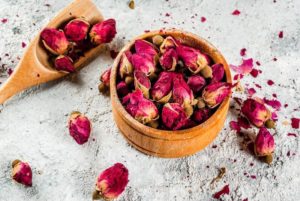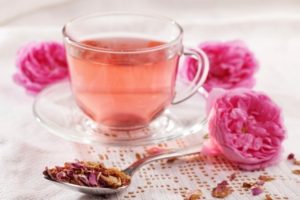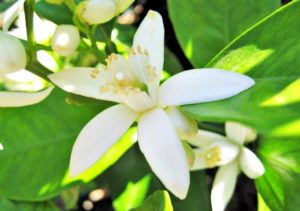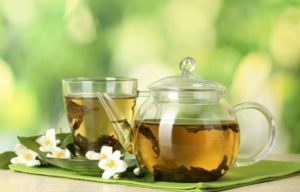El Anís estrellado (Illicium verum) es un árbol perenne nativo del suroeste de China, Corea y Japón, cuyos frutos en forma de estrella se utilizan ampliamente tanto en la medicina tradicional china como en su cocina, ampliándose su uso al sur de Asia e Indonesia. Actualmente se cultiva también en el sudeste de los Estados Unidos y en otras zonas cálidas y húmedas.
El fruto es recogido antes de que madure y se deja secar al sol para que adquiera el típico color marrón rojizo y la consistencia leñosa.
Su olor, forma y propiedades hacen del anís estrellado una especia popular en la preparación de tés y de comidas, debido a que su principio activo de anetol aumenta la esencia y sabor
Además cuenta con propiedades antioxidantes, antimicrobianas, expectorantes, analgésicas y sedativas.
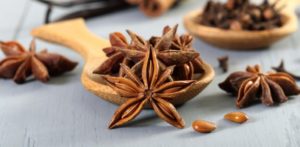
MÁS BENEFICIOS:
- El anís estrellado se usa para mejorar las digestiones.
- Por su efecto carminativo (facilitador de la eliminación de los gases) se usa contra la aerofagia y el meteorismo
- Por su efecto antiespasmódico es útil para aliviar el dolor abdominal debido a espasmos.
- También se usa de forma tradicional para aumentar la secreción de leche en la lactancia.
- Reduce la retención de líquidos, lo que elimina las toxinas del cuerpo.
- Combate la gripe y la influenza, así como la tos y resfriado de temporada
- El anís tiene propiedades sedantes, por lo que ayuda a conciliar el sueño.
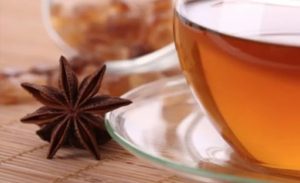
Siempre es bueno estar informado al 100% y consultar con tu médico de confianza antes de tomar cualquier suplemento.
Producto 100% natural, su uso está destinado al consumo como alimento.
EL CONSUMO DE ESTE PRODUCTO ES RESPONSABILIDAD DE QUIEN LO RECOMIENDA Y DE QUIEN LO USA
REFERENCIAS
1)Star anise (Illicium verum): Chemical compounds, antiviral properties, and clinical relevance.
Patra JK, Das G, Bose S, Banerjee S, Vishnuprasad CN, Del Pilar Rodriguez-Torres M, Shin HS.Phytother Res. 2020 Jun;34(6):1248-1267. doi: 10.1002/ptr.6614. Epub 2020 Jan 29.PMID: 31997473 Review.
Medicinal herbs are one of the imperative sources of drugs all over the world. Star anise (Illicium verum), an evergreen, medium-sized tree with star-shaped fruit, is an important herb with wide distribution throughout southwestern parts of the Asian continent. …
2) Antiviral activity of Illicium verum Hook. f. extracts against grouper iridovirus infection.
Liu M, Yu Q, Xiao H, Yi Y, Cheng H, Putra DF, Huang Y, Zhang Q, Li P.J Fish Dis. 2020 May;43(5):531-540. doi: 10.1111/jfd.13146. Epub 2020 Feb 25.PMID: 32100315
Grouper iridovirus causes high mortality rates in cultured groupers, and effective treatment for grouper iridovirus infection is urgently required. Illicium verum Hook. f. is a well-known medicinal plant with a variety of biological activities. The aim of this study …
3) Illicium verum: a review on its botany, traditional use, chemistry and pharmacology.
Wang GW, Hu WT, Huang BK, Qin LP.J Ethnopharmacol. 2011 Jun 14;136(1):10-20. doi: 10.1016/j.jep.2011.04.051. Epub 2011 Apr 29.PMID: 21549817 Review.
ETHNOPHARMACOLOGICAL RELEVANCE: The fruit of Illicium verum Hook. f. (Chinese star anise) has long been used in traditional Chinese medicine and food industry with the actions of dispelling cold, regulating the flow of Qi and relieving pain. …AIM OF THE REVIEW: Th …
4) Inhibitory Activity of Illicium verum Extracts against Avian Viruses.
Alhajj MS, Qasem MA, Al-Mufarrej SI.Adv Virol. 2020 Jan 25;2020:4594635. doi: 10.1155/2020/4594635. eCollection 2020.PMID: 32411246 Free PMC article.
This study aimed at screening the inhibitory activity of Illicium verum extracts against avian reovirus, infectious bursal disease virus (IBDV), Newcastle disease virus (NDV), and infectious laryngotracheitis virus (ILTV). The cytotoxic and antiviral actions of 3 ex …
Li Y, Wang Y, Kong W, Yang S, Luo J, Yang M.Food Chem Toxicol. 2020 Jul;141:111347. doi: 10.1016/j.fct.2020.111347. Epub 2020 Apr 19.PMID: 32320716
The antifungal properties of Illicium verum essential oil (IV-EO) against a toxigenic strain of Aspergillus flavus (A. flavus) were analyzed in order to determine its use in the preservation of lotus seeds. …

